The water isn’t always brown, but Scarlet Weathers lives like it is. Not once has she drank the tap water from her kitchen sink in her house in Sweeny, Texas. She knows, like everyone else in the town, that it can’t be trusted. Even her small grandchildren have noticed it during bathtime. Why is the water brown?
She and her daughter, Tally, instead spend hundreds of dollars a year on bottled water and refillable jugs. It’s common practice in Sweeny, a small town about 60 miles southwest of Houston. Weathers, who grew up in the area, has never known anything else: cooking with bottled water, feeding animals with bottled water, brushing teeth with bottled water, stained dishes, stained sinks, stained clothes.
“Sometimes you just don’t feel clean when you shower,” said Weathers, 46. “The water could be clear that day, but you just don’t know.”
Outside Weather’s one-story house, there’s a five-gallon jug of water on the porch. There’s more in the house. Later that week, she would go fill them up again.
“You don’t know Sweeny if you don’t know the water,” she said.
And to know the water is to know that natural minerals and aging infrastructure have polluted the water supply for years, creating a coffee-colored and sometimes foul-smelling flow. The much-needed overhaul of Sweeny’s water system would cost millions that the town does not have.
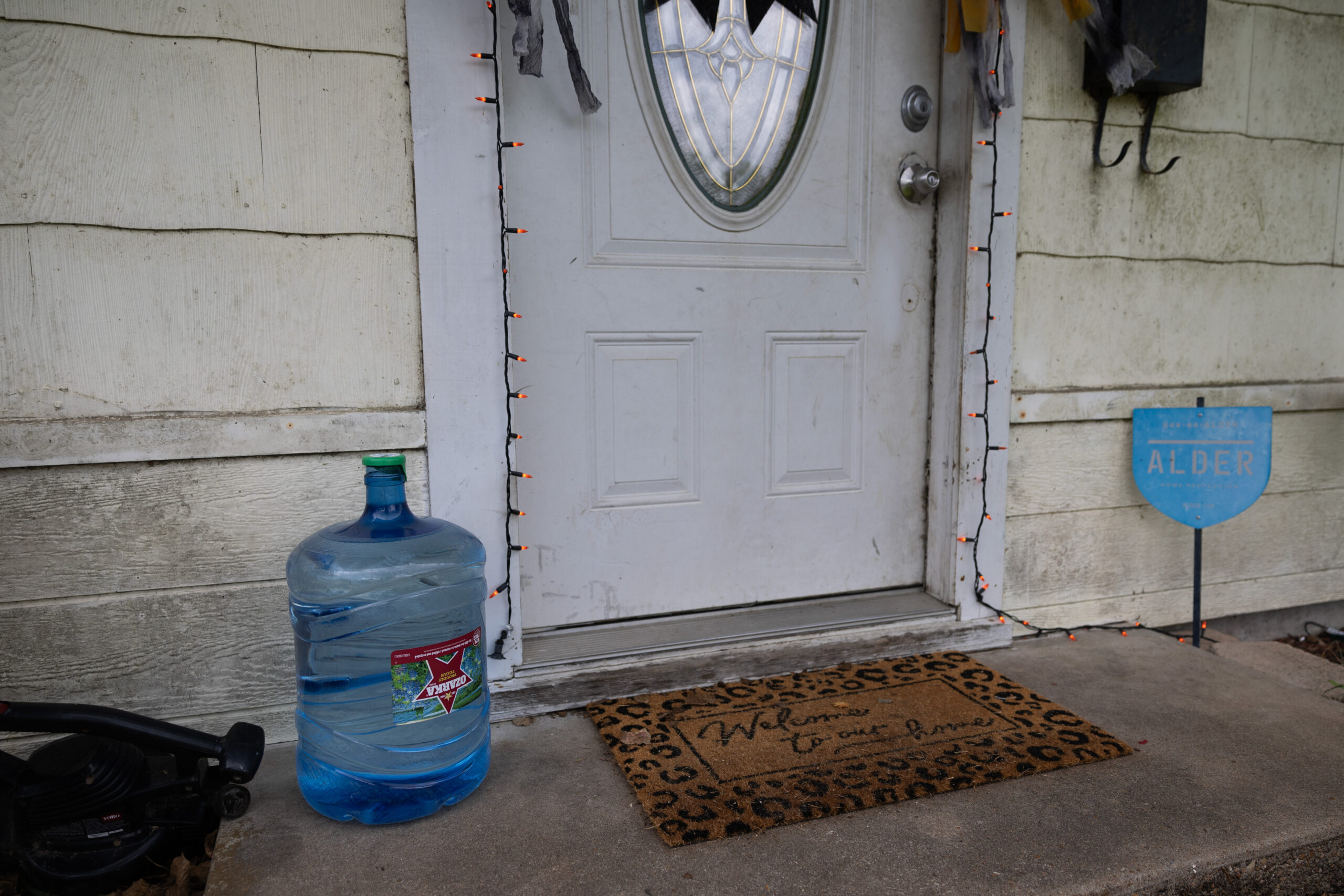
A recently delivered jug of water sits outside Scarlet Weathers’ home in Sweeny, Texas. Photo: Antranik Tavitian.
In Texas towns like this, water issues are not uncommon and hard to clear up. There are hundreds of towns that need funding for various water projects. However, the demand far outweighs what is available, and communities like Sweeny are often left behind. Just last year, Sweeny’s leaders rejected a funding offer from the state to clean the town’s water supply through the Texas Water Board’s Clean Water and Drinking Water State Revolving Funds — federal dollars distributed to the states that are specifically earmarked for issues like brown water. The reason, city leadership said, was that the town just didn’t have the resources or budget even to apply for the funding.
What happened in Sweeny is hardly unique in Texas. For the past few months, Capital & Main has investigated the limitations in specific funding from the Texas Water Board’s drinking water and clean water state revolving funds, finding:
- Of the hundreds of communities that apply for the drinking water and clean water funds, few actually receive the money. This is due partially to increasing demand for water infrastructure. For example, in 2023, the most recent documented year, 267 Texas communities submitted the initial application for drinking water funding, but only 38 were invited to officially apply for the money.
- The number of funding recipients then further dwindles due to a lack of resources, understanding and time needed for communities to actually receive the funding. Of those 38 communities in 2023, only 10 actually received the funding for that year. The same gap appears in the clean water funding as well. In 2023, there were 170 applications submitted, 19 applications invited to apply again, but only 11 received funding.
- Texas will need a little over $3 billion annually to address drinking water needs through 2041, according to the 2021 U.S. Environmental Protection Agency’s drinking water infrastructure needs assessment. However, Texas is not meeting this demand. For example, in 2023, Texas received just $414 million from the federal government in funds to address drinking water issues through the state revolving fund, according to data collected by the Water Program Portal — a national system that tracks federal investments.
As in Sweeny, water in Texas is a never-ending story. The state has been plagued with drought, flooding and water infrastructure issues for decades. As the population in Texas grows, demand for water will increase by 9% by 2070, according to the state’s most recent water plan. During that same time, Texas’ existing water supply will decline by 18%, and extreme storms, floods and droughts due to climate change will increase in frequency, putting the state’s water resources in jeopardy.
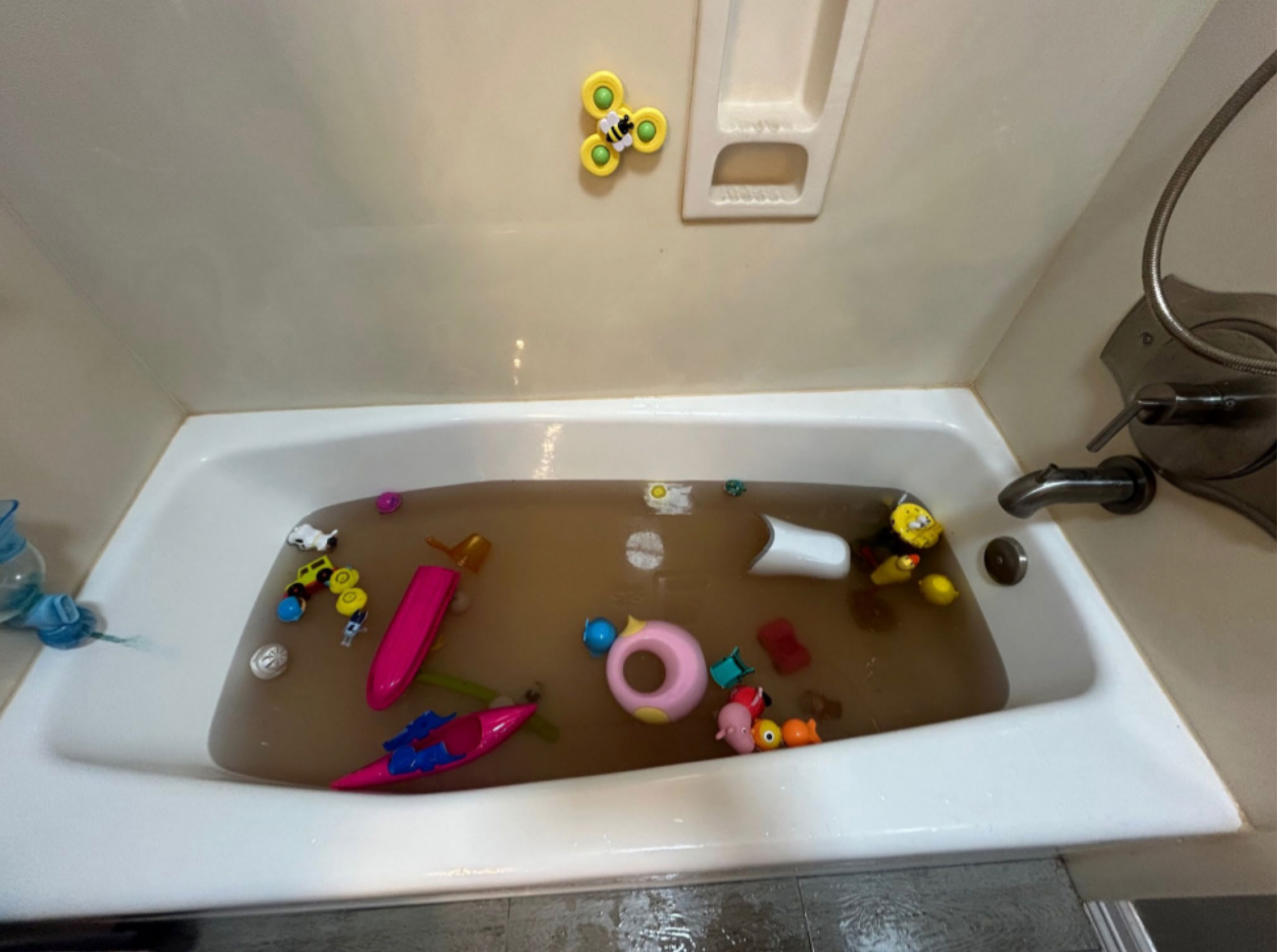
Brown water fills the bathtub in a Sweeny home. Many residents worry the murky water isn’t safe to bathe in.
Such water issues are not unique to Texas. President Donald Trump’s proposed 2026 budget would cut the clean and drinking water revolving fund by nearly $2.5 billion — leaving $305 million for states — a move that would impact not just Texas but every thirsty state dependent on the funds, such as California, Florida and Illinois.
To combat these growing concerns, Texas legislators are sending Proposition 4 to the ballot this November. This measure would dedicate a portion of state sales tax revenue to the Texas Water Fund for a total of $20 billion over 20 years. Experts believe this is a great start, but many remain concerned.
“There is no silver bullet to meet demand,” said Rogelio Rodriguez, the chief operating officer for the Water Finance Exchange, a Washington, D.C.-based organization that helps communities access funding such as the drinking water program. “There is no one agency, no one support system, that has the money to meet demand. This is a $30, $40 billion answer.”
Just the same, Rodriguez knows the work doesn’t stop — especially for communities like Sweeny.
“More and more communities need [assistance],” said Rodriguez. “We’re a technical assistance provider, and we’re in about 70 communities throughout Texas, with another 20 asking for help. We’re trying to catch up.”
The Cost of Funding
The summer Sweeny leadership applied for state funding for its water supply, the residents in town experienced some of the more consistent brown water in a while. After Sweeny initially applied, residents sent in pleas for clean water in waves, according to Texas Water Development Board documents.
One resident wrote that the water “smells so much like chlorine it burns our eyes when taking a shower.” Another resident wrote that drinking the water caused both her dog and herself to get sick.
Macy Kresta, who moved to Sweeny in 2020 with her husband, sent photos to the Texas Water Development Board of her children in the bath dirty with brown water.
“We are desperately seeking any kind of assistance with our ongoing water issue and it would truly make such a difference in thousands of lives,” Kresta wrote in July 2024.
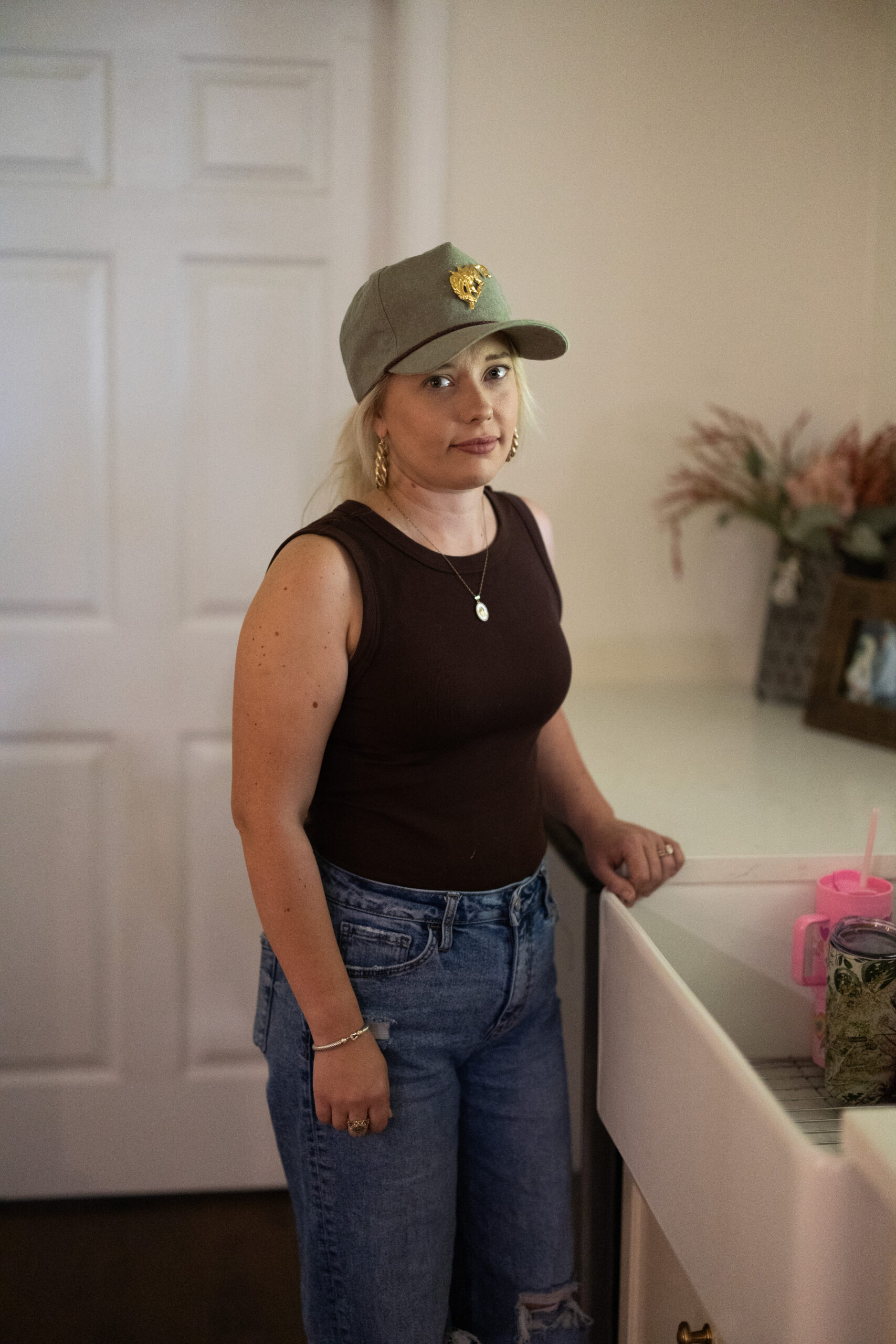
Macy Kresta at her home in Sweeny. Photo: Antranik Tavitian.
For nearly four decades, the EPA’s Clean Water and Drinking Water State Revolving Fund has sent federal dollars to states to fund both clean and drinking water infrastructure projects through the Clean Water Act.
The funding has varied by the year, but in recent years the federal government increased its allotment due to President Joe Biden’s 2021 Infrastructure Investment and Jobs Act. Consequently, the budget rose by $43 billion nationally, according to the EPA.
However, the application process can be complicated, especially for small communities with limited resources, according to Tom Entsminger, the policy director for the Texas Coast and Water Program at the National Wildlife Federation.
“There’s a lot of paperwork involved, quite frankly, in applying for funds, identifying eligible projects and details you have to provide about the finances to close the deal,” said Entsminger, who worked for the Texas Water Development Board for eight years. “And I think some smaller, more rural applicants don’t really plan ahead for the kind of administrative capacity support that they might need to get to the finish line entirely.”
To apply, interested parties — towns, cities or water districts — must submit a project information form to express interest in the funding. Then selected applicants are invited to officially apply based on a needs assessment completed by the Texas Water Development Board with disenfranchised communities prioritized. The process to apply includes gathering engineering documents, annual audits, revenue streams and other information within 30 days.
This can be a lot, said Entsminger. And it can create a gap in who actually receives the funding.
The funding may also be unpopular in some communities. In some cases, municipal leadership may have to raise taxes or make uncomfortable decisions for the community, said Rodriguez.
“We’ve had communities where the mayor says I’m not raising rates, I’m not doing that,” said Rodrioguez. “If it’s not a 100% grant, I don’t want anything to do with it.”
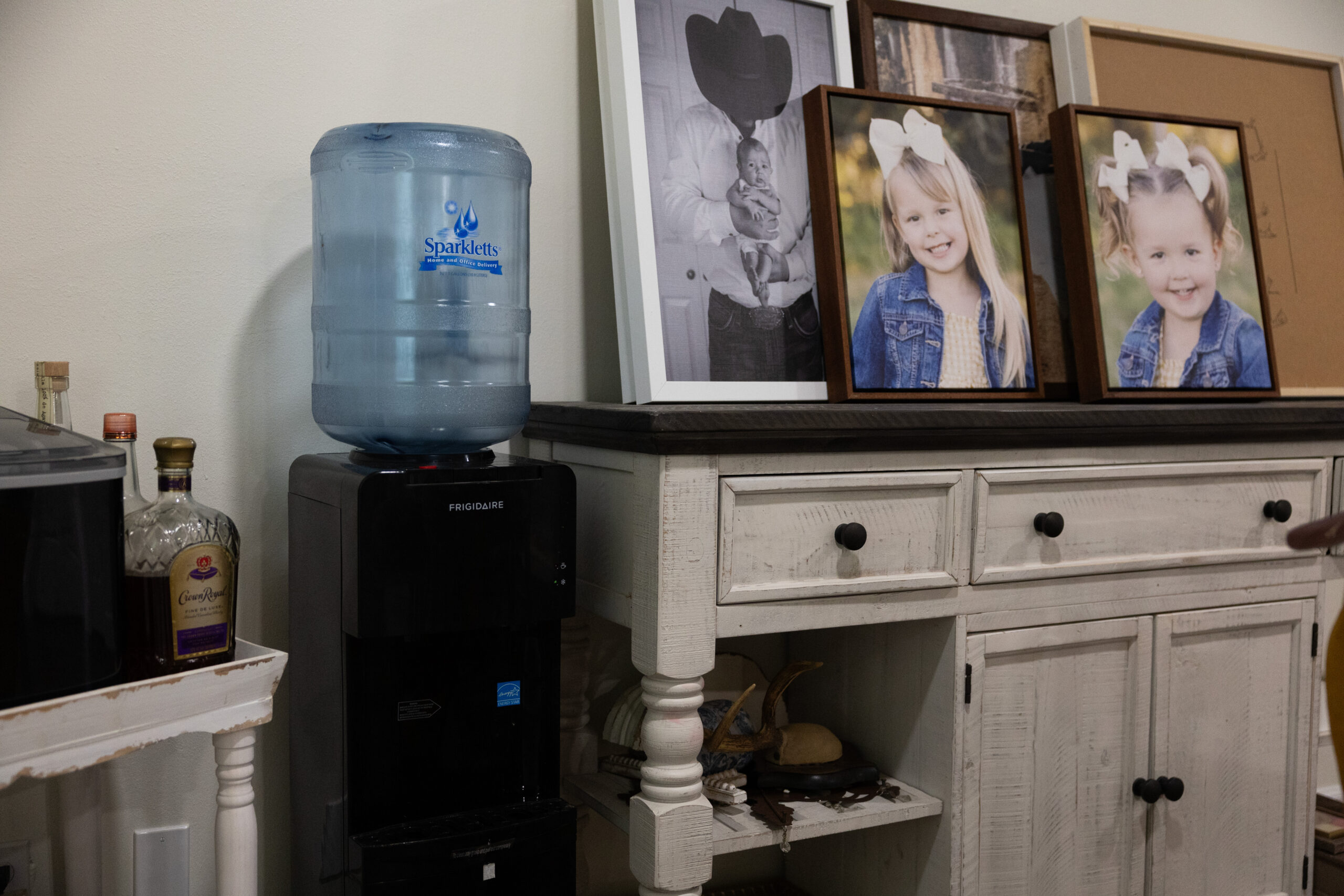
A water cooler in Macy Kresta’s home. The family relies on bottled water for drinking. Photo: Antranik Tavitian.
Communities may also decline to apply because they did not get the funding offer they were hoping to receive. The funding from the revolving funds is a mix of loan forgiveness and loan repayment. The best deal a community can get is 70% forgiveness and 30% repayment, but only so many communities get such an offer.
“Maybe they got excited about the program because they found out they could get 70% loan forgiveness, but instead they ended up getting offered a [repayment] loan at a really good rate. So they have to go back and sell that to their constituents,” Entsminger said.
In Sweeny, the groundwater supply had been contaminated for years with a mix of manganese and iron. While manganese is naturally occurring in water, high levels of it can cause a brown coloring and a metallic odor, according to the EPA. The Texas Commission on Environmental Quality tested the levels in early 2024 and found that levels in Sweeny water were more than three times the recommended limit.
Nevertheless, when the town received an offer to apply for the drinking water funding with a 70% loan forgiveness and 30% loan repayment, city council members turned it down.
David Jordan, Sweeny’s city manager, said the town government didn’t have the resources to put the engineering paperwork together in time to apply.
“There was no way I could prepare those documents in 30 days,” Jordan said.
Closing the Gap
In 2023, the Texas Legislature established the Water Utilities Technical Assistance Program to help communities apply for funding from programs such as the Texas drinking water and clean water revolving fund. The program is meant to address the gap communities are facing when applying for water infrastructure funding.
Communities can now receive up to $150,000 in assistance to complete the application process.
In response to concerns that the process is too burdensome, an agency representative said it has a dedicated outreach team that regularly holds webinars and in-person presentations and workshops throughout the state.
Despite the outreach, some communities may still be unaware of the water funds, said Rodriguez.
“That’s what worries me the most. There are communities who raise their hands and say, ‘I need help.’ But how many communities are out there that are struggling with unhealthy water systems that aren’t raising their hand?” said Rodriguez. “How do we find them? How do we get them on the radar to talk with someone?”
At the same time — along with climate-change issues — heavily water-dependent data centers are popping up in small towns, causing alarm about the amount of water they use to cool the banks of supercomputers used for AI and other applications.
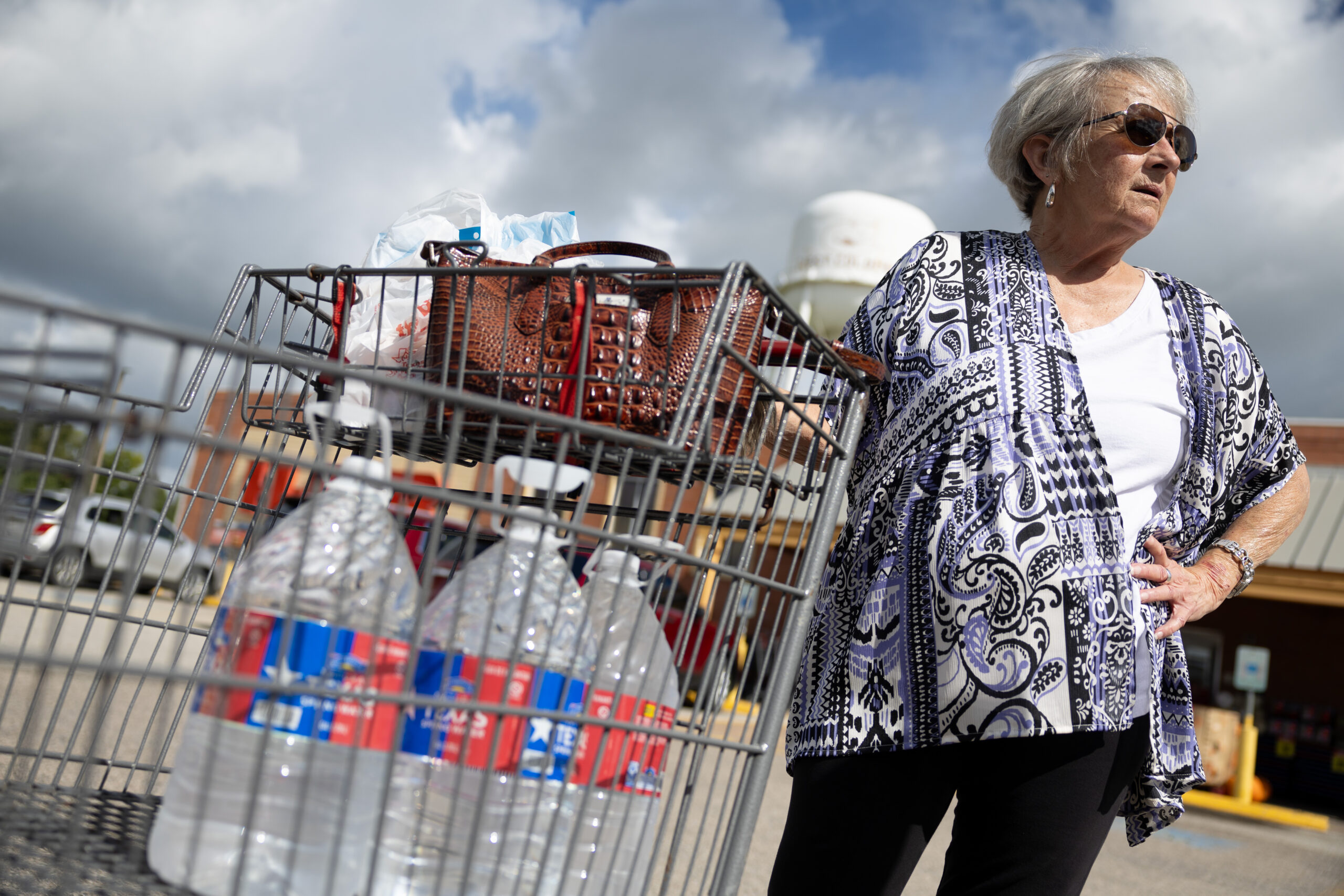
Sweeny resident Iris Chenault leaves the H-E-B grocery store in the nearby town of West Columbia after purchasing her bottled water for the week. Photo: Antranik Tavitian.
On the northeast side of Houston, Usman Mahmood from the environmental nonprofit Bayou City Waterkeeper is trying to close a completely different gap in the revolving state water program. Disenfranchised communities within larger cities may have a hard time getting funding for water infrastructure projects because they belong to a larger municipal water system.
These communities, Mahmood said, are often the most at risk for climate disasters.
“Time and time again, through hurricanes, through winter freezes, through boil notices, we saw that Houston is in need of a massive infrastructure overhaul,” he said.
Disenfranchised communities are more likely to get the best 70%/30% fund deal, but the deal is calculated based on whether the annual median household income of the entire city is 75% or below the state’s medium household income. So when a large city such as Houston, which had an annual median income of nearly $63,000 in 2023, applies for a specific community, such as Kashmere Gardens in the northeast side, where median income was closer to $32,000 in 2023, the state revolving fund is looking at the entire city’s income levels and not those of just one hard-pressed neighborhood.
As a result, the northeast side’s chances of funding drop considerably. In the 2026 list of applicants for clean water funds, Houston was again listed as ineligible for disenfranchised community funding and its projects were ranked at about Nos. 38, 39 and 40 out of 203 applications. The top 25 communities were invited back to apply, eliminating Houston from the process.
This summer, Mahmood submitted comments to the Texas Water Development Board asking that the process be changed so medium household income is analyzed through census tracts rather than entire cities.
“It’s worth it in the long run, against these climate and environmental impacts, to start investing in areas that just have to deal with the largest brunt of it,” Mahmood said.
Texas Water Development Board staff are aware of these issues and said in a statement to Capital & Main that the agency is “exploring ways to improve the programs while ensuring that the federal and state requirements for the programs continue to be met.”
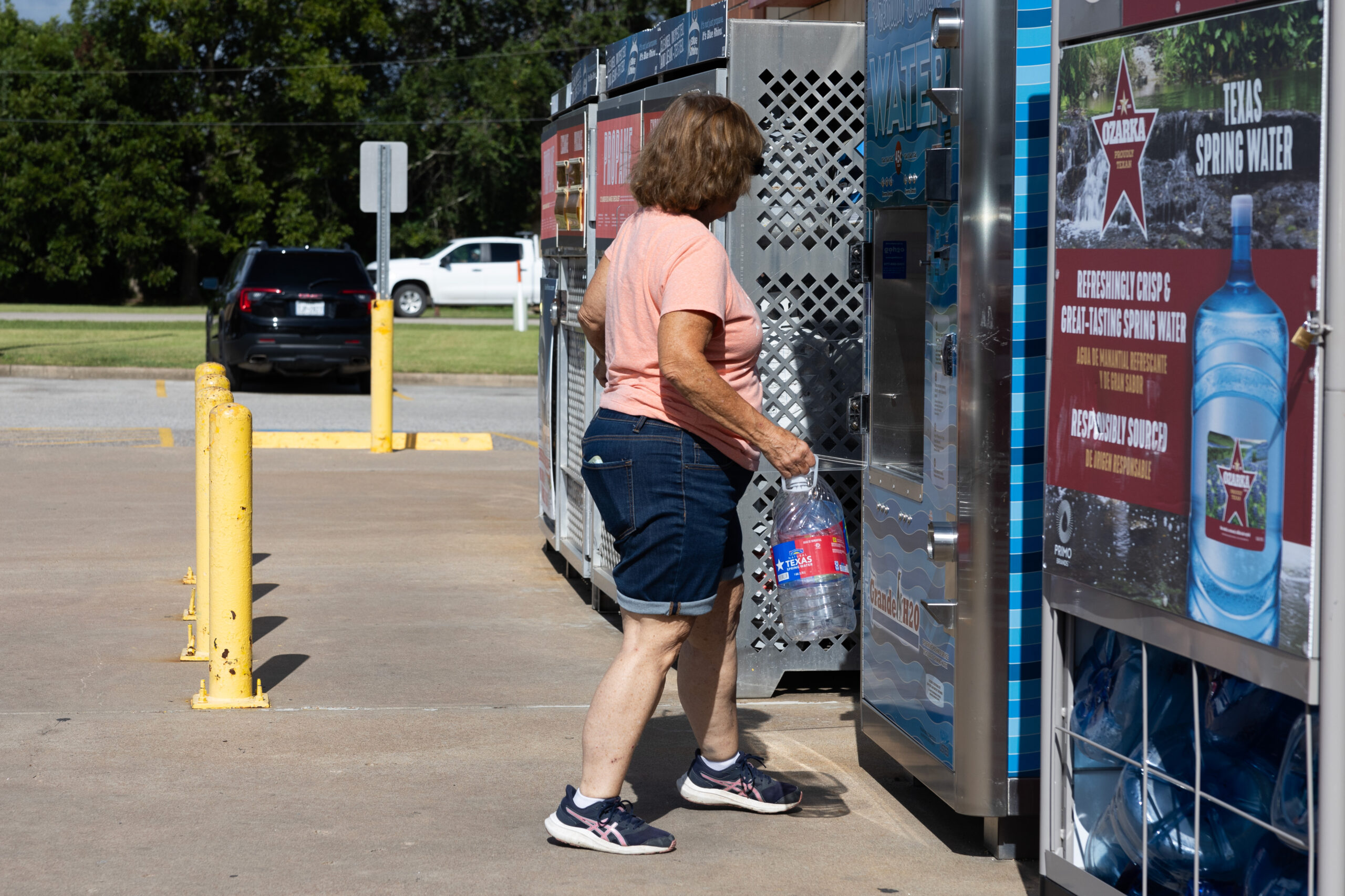
A woman refills a water bottle outside the H-E-B in West Columbia. Photo: Antranik Tavitian.
Of course, a lot of the issues could be fixed with more funding, according to Entsminger. The extra funding that came from the Infrastructure Investment and Jobs Act was a great start, he said. And in 2023, Texas residents voted to create the Texas Water Fund with an initial $1 billion for water projects, and Proposition 4, the November ballot measure, would allot $1 billion from sales tax every year to water projects for the next 20 years.
However, uncertainty around federal funding in 2026 could leave Texas’ water future in doubt — cementing the gap that already exists in communities across the state.
If the funding does shrink, Texas Water Development Board officials said they could offer funds using the repayments from the loans previously issued. However, eventually, less funding would mean less available forgiveness.
In Sweeny, town leaders are already working on another way to fix the off-putting brown water without the state revolving water funds, by using a chemical called Bicarbus that is more cost-effective, according to City Manager David Jordan. He’s hoping to see results soon.
Some in Sweeny have installed or are debating purchasing full water filtration systems costing several thousand dollars. Others are just biding their time until they can afford to leave the small town entirely. For Weathers, the Sweeny resident who spends hundreds a year on bottled water, any trust that the town will fix the water supply faded long ago. When she heard that Sweeny rejected the state water funding last year, it felt like the final straw.
“I’m just moments from leaving this place,” Weathers said. “I can’t do the water anymore. I just can’t.”
Copyright 2025 Capital & Main
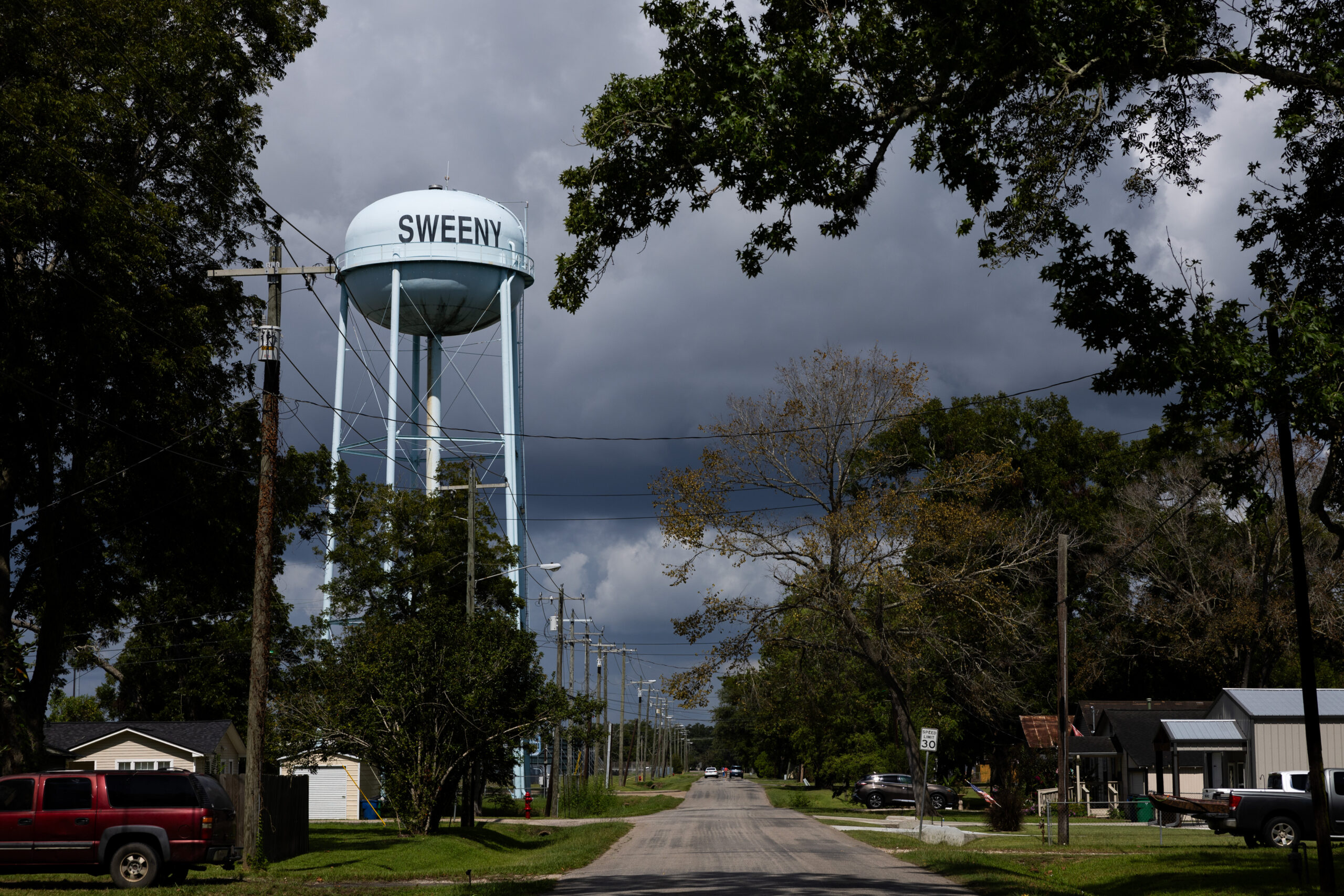
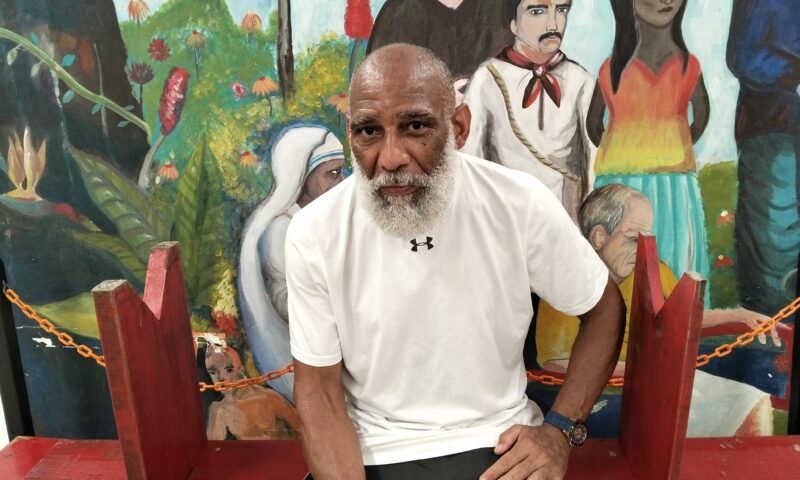
 StrandedNovember 25, 2025
StrandedNovember 25, 2025
 Column - State of InequalityNovember 21, 2025
Column - State of InequalityNovember 21, 2025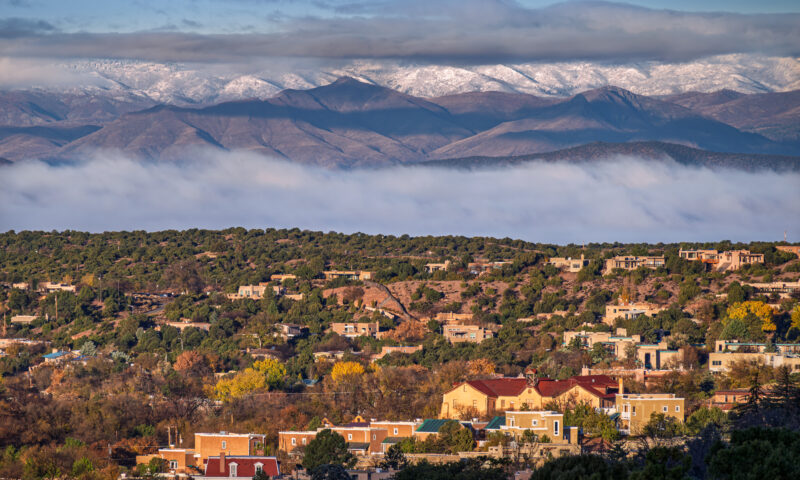
 Column - State of InequalityNovember 28, 2025
Column - State of InequalityNovember 28, 2025
 The SlickNovember 24, 2025
The SlickNovember 24, 2025
 Striking BackDecember 4, 2025
Striking BackDecember 4, 2025
 Latest NewsDecember 8, 2025
Latest NewsDecember 8, 2025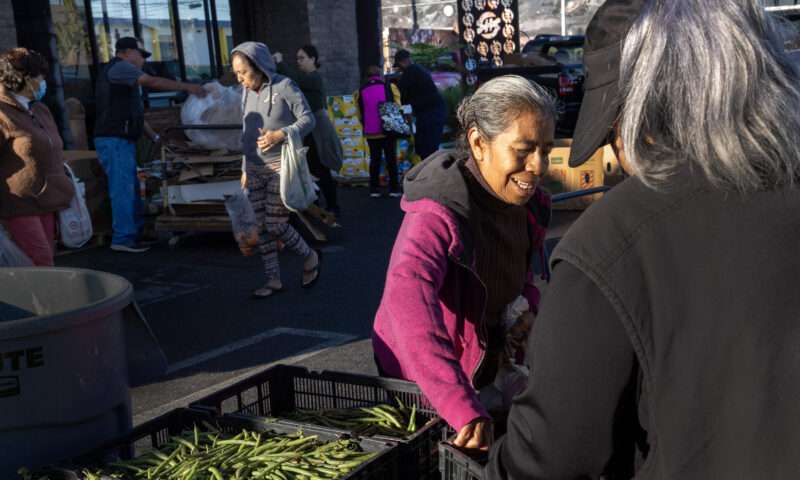
 Latest NewsNovember 26, 2025
Latest NewsNovember 26, 2025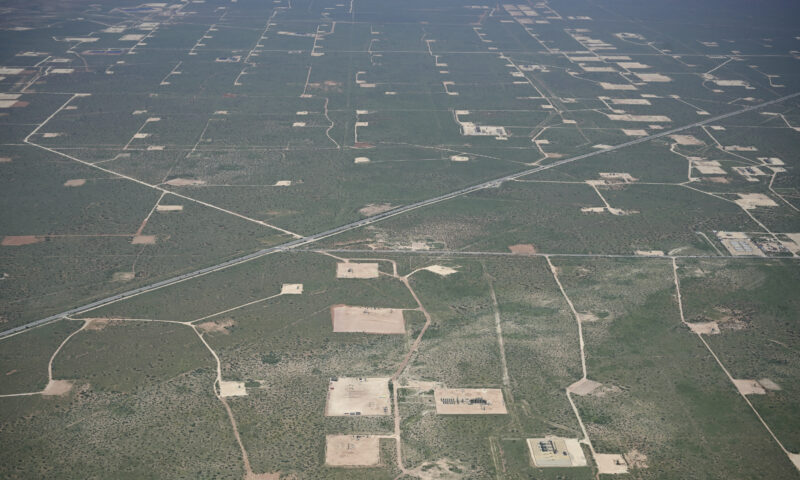
 The SlickDecember 2, 2025
The SlickDecember 2, 2025







